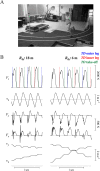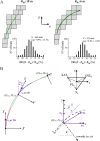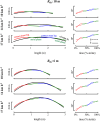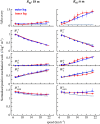Kinetics and mechanical work done to move the body centre of mass along a curve
- PMID: 38346043
- PMCID: PMC10861085
- DOI: 10.1371/journal.pone.0298790
Kinetics and mechanical work done to move the body centre of mass along a curve
Abstract
When running on a curve, the lower limbs interact with the ground to redirect the trajectory of the centre of mass of the body (CoM). The goal of this paper is to understand how the trajectory of the CoM and the work done to maintain its movements relative to the surroundings (Wcom) are modified as a function of running speed and radius of curvature. Eleven participants ran at different speeds on a straight line and on circular curves with a 6 m and 18 m curvature. The trajectory of the CoM and Wcom were calculated using force-platforms measuring the ground reaction forces and infrared cameras recording the movements of the pelvis. To follow a circular path, runners overcompensate the rotation of their trajectory during contact phases. The deviation from the circular path increases when the radius of curvature decreases and speed increases. Interestingly, an asymmetry between the inner and outer lower limbs emerges as speed increases. The method to evaluate Wcom on a straight-line was adapted using a referential that rotates at heel strike and remains fixed during the whole step cycle. In an 18 m radius curve and at low speeds on a 6 m radius, Wcom changes little compared to a straight-line run. Whereas at 6 m s-1 on a 6 m radius, Wcom increases by ~25%, due to an augmentation in the work to move the CoM laterally. Understanding these adaptations provides valuable insight for sports sciences, aiding in optimizing training and performance in sports with multidirectional movements.
Copyright: © 2024 Mesquita et al. This is an open access article distributed under the terms of the Creative Commons Attribution License, which permits unrestricted use, distribution, and reproduction in any medium, provided the original author and source are credited.
Conflict of interest statement
The authors have declared that no competing interests exist.
Figures






References
-
- Willems PA, Cavagna GA, Heglund NC. External, internal and total work in human locomotion. III. Energy Changes of the centre of mass as a function of speed and body size in birds and mammals. Journal of Experimental Biology. 1995;198:379–93. - PubMed
MeSH terms
LinkOut - more resources
Full Text Sources
Miscellaneous

